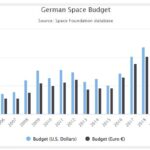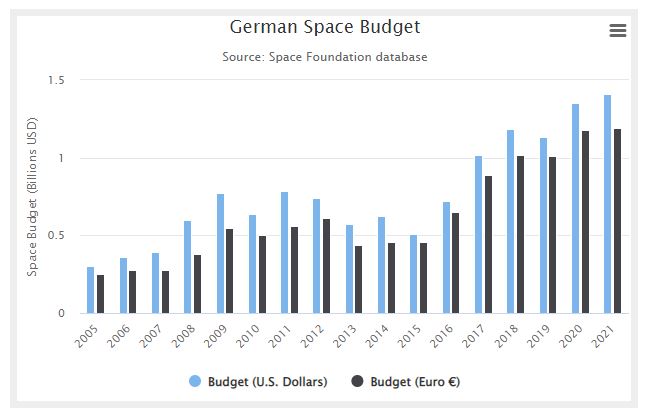2013
Estimated U.S. Department of Defense Space Spending, 2005-2022

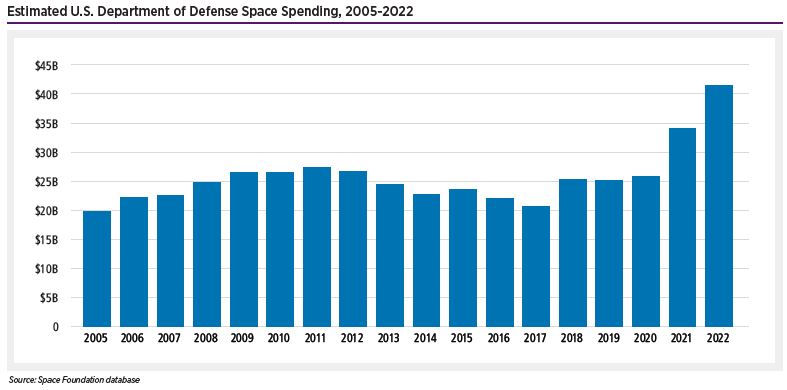
This developing space strategy is reflected in growing military space spending by the United States, with the Pentagon more than doubling space budgets from $19.7 billion in 2005 to an estimated $41.4 billion in 2022.
Lunar Missions by Result, 1959-2022

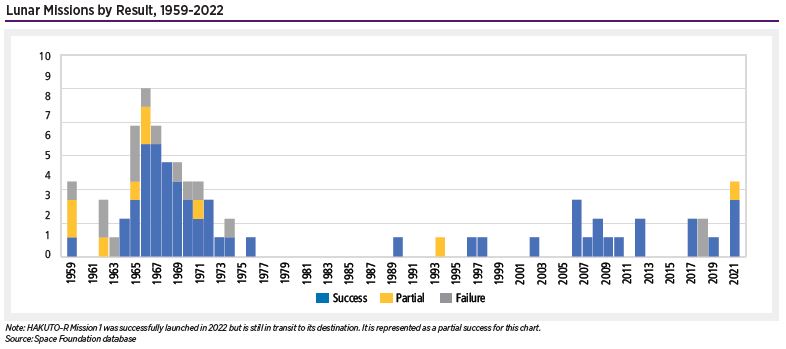
Eight nations have launched lunar missions, but only three have landed on the Moon. In 2022, four missions were partially or fully successful, a tempo last seen in 1969 — the year the first humans stepped foot on the lunar surface.
United Kingdom Space Budget, 2005-2021
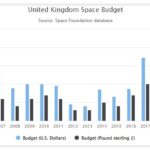
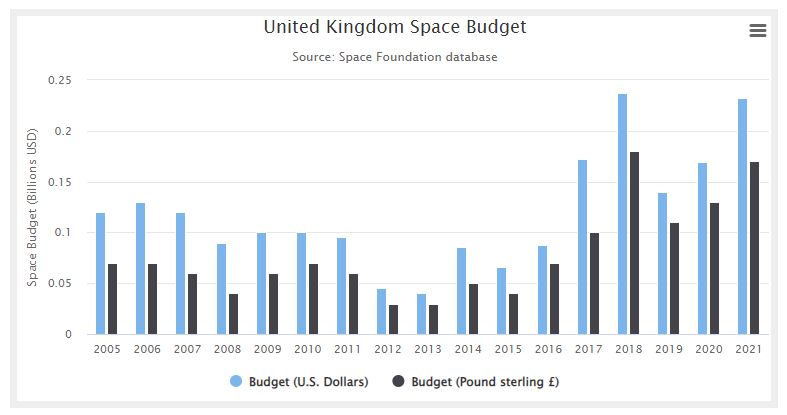
The United Kingdom Space Agency (UKSA) is an executive agency of the Government of the United Kingdom, responsible for the United Kingdom’s civil space program.
South Korean Space Budget, 2005-2021
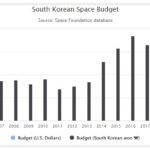

The South Korean government continued development of a Korean-made launch vehicle and improvement in the country’s ability to utilize information gathered by satellites.
Russian Space Budget, 2005-2021
SNAPSHOT: Lunar Missions


The first attempted lunar mission was the Soviet Union’s Luna 1 impactor, which launched Jan. 2, 1959, and passed within only 5,995 kilometers of the Moon at its closest point. The Space Race brought a large wave of lunar activity in the 1960s, but there have only been a few missions in the decades since.
Indian Space Budget, 2005-2021
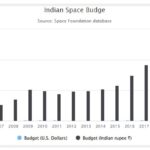
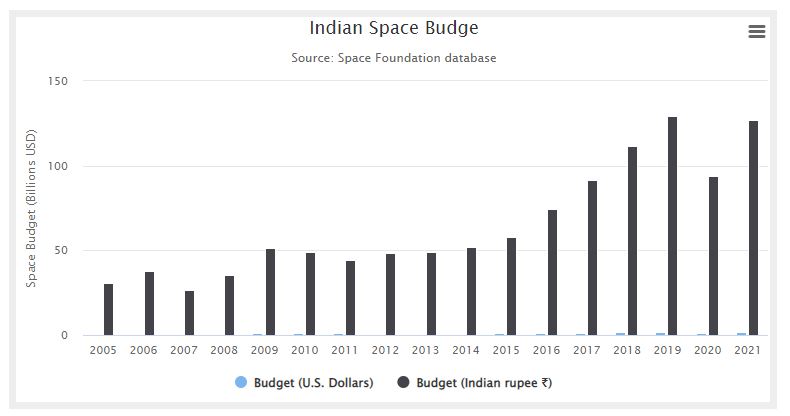
Indian space activities are coordinated through the Indian Space Research Organisation (ISRO).
Spanish Space Budget, 2009-2021
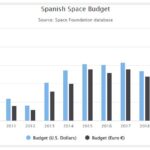
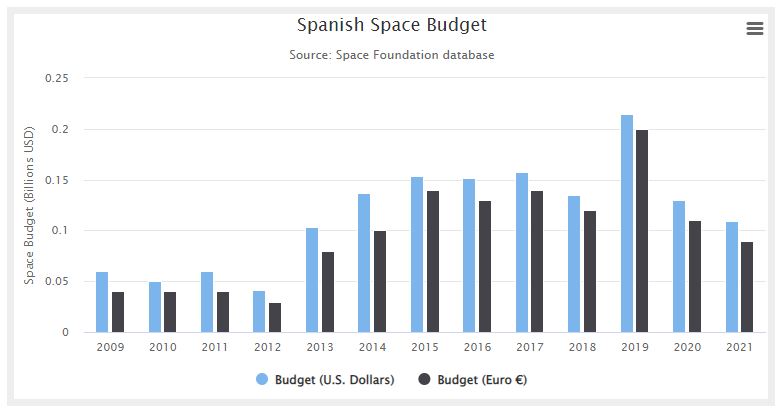
Space activities in Spain are coordinated by the Instituto Nacional de Tècnica Aeroespacial (INTA) within the Ministry of Defense.
Italian Space Budget, 2005-2021
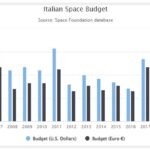
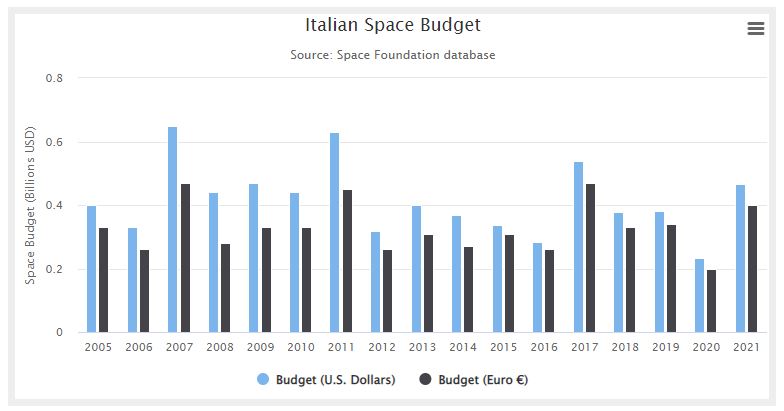
The Italian space agency, the Agenzia Spaziale Italiana (ASI) is the main contributor, other agencies within Italy also invest in space activities, including the Ministry of Defense.


